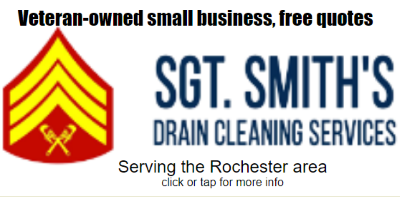At the shelter, we see and use more collars than the average person. Every dog comes into the shelter with something different. While it's natural to want to choose a collar that's visually pleasing (there are some really fun prints out there!), these aren't usually the best fit for most dogs. If you have a dog that pulls excessively, for example, a "pretty" collar isn't going to do much for you. Here's a brief introduction to some of the most common collars you will find in stores.
Flat Collars
Most dog collars you find in stores - especially the decorative ones - are flat collars. Flat collars, as the name implies, fit flat against your dog's neck. Flat collars don't offer you much control over the dog you are walking unless you yank on them, which can be harmful to your pet. Many people keep a decorative flat collar on their pet at all times that has their ID tags on it but then use something else, like a harness, when walking their dog.
Martingale
Martingale collars are what you'll find on the shelter dogs. Unlike flat collars, martingales have two loops - one that goes around the dog's neck and another much smaller loop that, when pulled, tightens the bigger loop around the dog's neck. Martingales must be fitted properly so, when tightened, they are only tightened enough to fit closely around your pet's neck, not choke them. Martingale collars are great for dogs that can easily slip out of regular collars, like Greyhounds.
Harnesses
Harnesses fit around your dog's upper body instead of their neck. They are especially great for small breed dogs and strong pullers as they remove the strain for your dog's neck and keep them from choking themselves by pulling too hard. Some harnesses have a hook for a leash on the pet's back while others hook on the front and are designed to help your dog learn to walk well on leash.
Head Collars
Head collars are often mistaken for muzzles. Head collars fit around the back of your pet's head as well as around their muzzle. The leash hooks to a ring by the dog's muzzle and, as a result, your dog is unable to pull as strongly as he or she would with a traditional collar or harness. Head collars are especially great for large breed or energetic dogs that can be overwhelming to walk.
Choke Collars and Prong Collars
Their names basically say it all. Choke collars are designed to fit tightly around your dog's neck when they pull. Because there is no limit to how far your dog can tighten the collar, they can essentially pull until they strangle or hurt themselves - especially if the collar is not sitting high up on your pet's neck. Prong collars are lined with blunt prongs that pinch your dog as he or she pulls on their leash. Both collars are designed to be used in conjunction with leash training and both can cause serious damage to your pet's throat if not fitted or used properly.
Some Things to Remember
Fit - Finding the right size collar for your pet is essential. If a collar is too tight it will be choking your dog, and if it's too loose it can fall right off. A good rule of thumb is that you should be able to comfortably fit two fingers between the collar and your dog's neck.
Placement - Many collars - especially ones designed to help with leash training - are meant to be worn high up on your dog's neck, close to their ears. This is to prevent your dog from damaging their trachea and strangling themselves if they pull too hard on their leash. It's important to make sure your dog's collar is on them properly in order to keep from hurting them.
Purpose - If you're looking to find the best collar for your pet, take a moment to think about what the purpose of the collar will be when you are out on a walk. If your dog is an extremely strong puller, for example, a flat collar won't help you much with training.
Training - One of the most important things to remember when choosing a collar for your dog is that no collar will replace training. The right collar is a tool to assist you with your training, not do all the work for you. A choke collar will not magically make your dog a perfect leash walker.
ID - No matter what type of collar you get for your pet, make sure they are wearing their ID tags!
Still not sure what to get? Talk to a dog trainer about what would work best for you and your pet!
Alaina Goodnough is the Promotions Coordinator at Cocheco Valley Humane Society in Dover, NH. She lives in Sanford, ME with two parrots, a cockatoo, two cats, a bearded dragon, and two dachshunds. She can be reached at CVHS at devassist@cvhsonline.org. To learn more about Cocheco Valley Humane Society, go to www.cvhsonline.org or call 603-749-5322.














